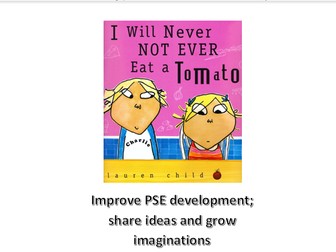
Feelings & emotions
Main aim:
Being able to read out questions with more than one diagraphs and split diagraphs about their emotions. Being able to draw a picture of what makes them feel a certain emotion. Being able to predict what might happen next and answer questions based on the story book.
Key learning intentions:
Being able to read diagraphs and split diagraphs. Drawing a picture to illustrate an experience or object. As well as answering questions based on the story by Lauren Child.
Resources:
‘I will not ever never eat a tomato’ by Lauren Child featuring Charlie and Lola, ‘what makes you feel sad/happy/surprised/tired/angry/scared?’ cut out questions, A4 blank paper and colouring pencils
